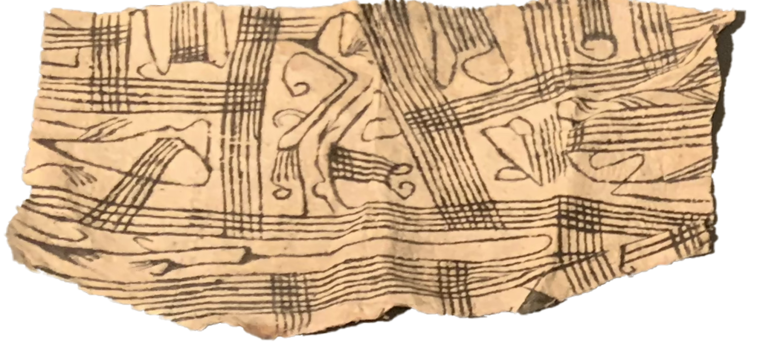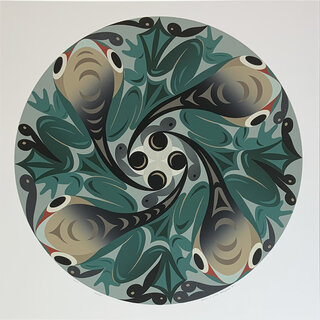
The Mbuti, or Bambuti, are thought to have lived in the Ituri rainforests in the Democratic Republic of Congo for several millennia. Mbuti individuals have historically deified the forest in which they lived, seeing it as the giver of all that was needed to thrive. Animals were also viewed as sacred, and this is seen in the hand-painted designs on bark cloth. Mbuti men create the fibrous bark cloth by beating strips of boiled inner tree bark with a hammer in order to make it thin and malleable. Women artists paint animal motifs and geometric designs with a fingerpaint made from blended charcoal milled with fruit juice. Once complete, panels such as these were historically worn as clothing, creating an intimate connection between the natural materials and motifs and the wearer.




